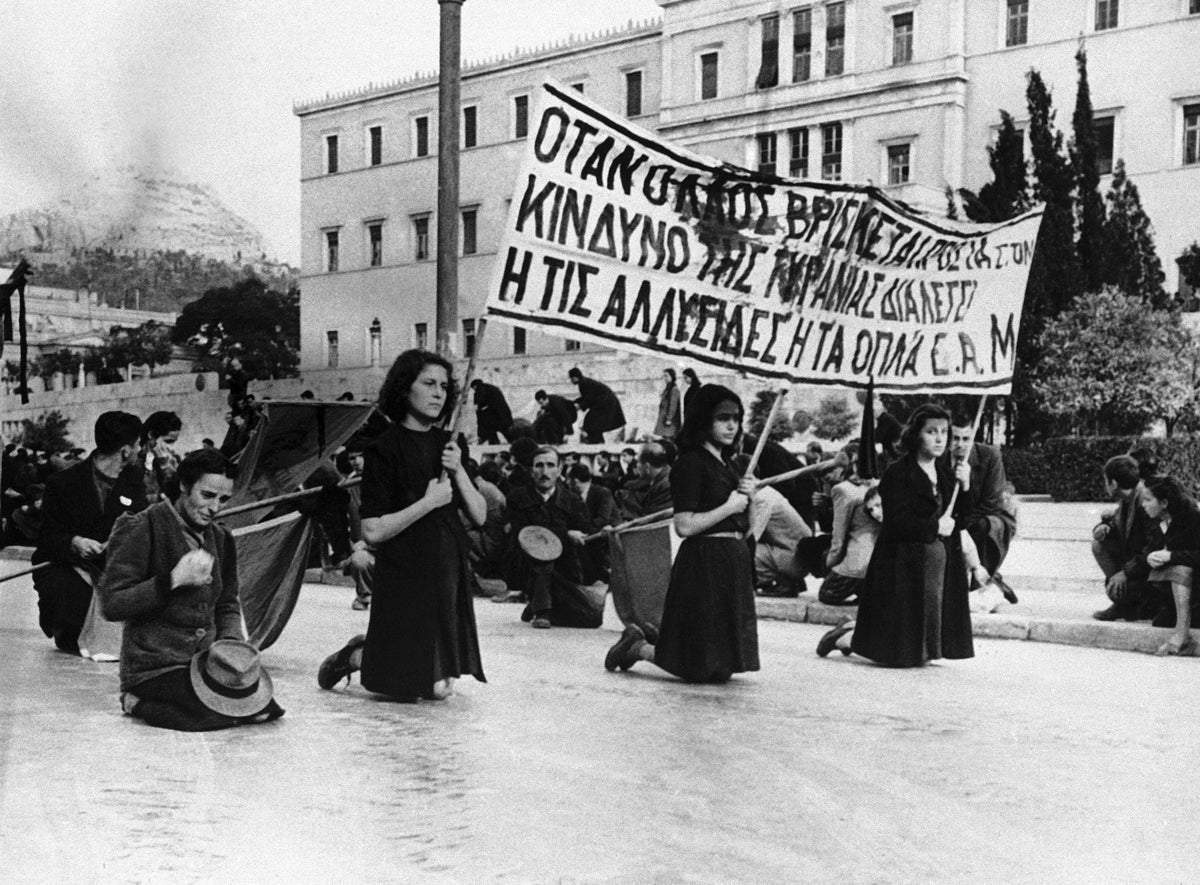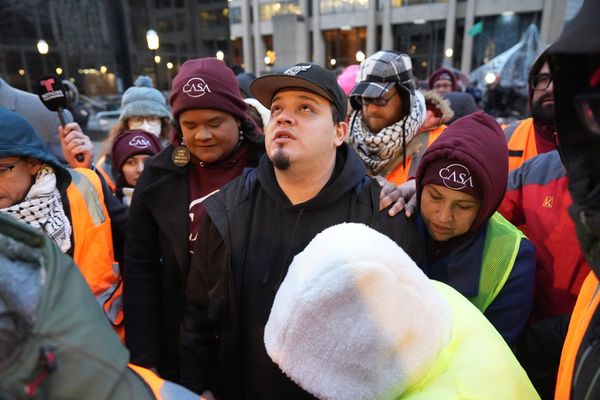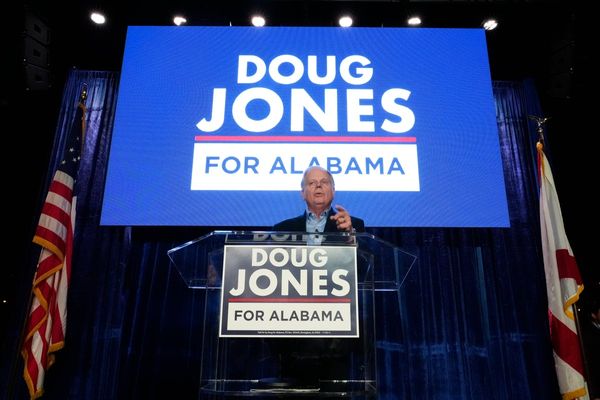
Across the street from the Temple of Olympian Zeus, the ancient monument in central Athens, historian Menelaos Haralabidis pauses in front of a drab apartment building.
The building's facade, freshly painted a mustard color, is riddled with bullet holes made by heavy machine gun fire. The marks have been stubbornly preserved for 80 years.
In December of 1944, as the final stages of World War II unfolded, Athens, newly liberated from Nazi occupation, was again ravaged by fighting. Allies turned on each other as Europe’s boundaries were already being redrawn by the war’s ultimate winners.
British troops and the new Greek government battled communist-led WW II resistance fighters in a bloody five-week confrontation that raged across the city.
“Athens was turned into a battlefield for 33 days, with major destruction, mostly in the surrounding districts, and thousands of victims,” Haralabidis said. “There were regular operations from all parts of the military: land army, artillery, air force, even British ships bombarding parts of Athens."
During the battle, Winston Churchill visited Athens at Christmas before British forces prevailed. The Dekemvrianá, as the December battle is known in Greece, extended a lasting legacy of violent political division and a reluctance to confront the past.
Haralabidis, a 54-year-old historian and author, has organized tours of the urban battle sites and the little that remains to commemorate them: Pockmarked walls and chipped surfaces that still exist on a handful of buildings around the Greek capital.
“Greek society must reckon with its history. To heal its wounds, we need to discuss them openly, understand what happened, and come to terms with the past,” he said.
Kaisariani, a once impoverished hillside district of Athens, earned the wartime nickname of “Little Stalingrad” for its concentration of resistance fighters, and witnessed some of the most ferocious fighting in December 1944.
Giorgos Kontostavlos, the district’s former mayor, grew up there on stories of the battles: Rebel fighters throwing up barricades with debris from artillery shelling, low-flying British bombers and intense exchanges of machine-gun and mortar fire, one blowing a hole in the roof of his grandfather’s home.
On a narrow side street in Kaisariani, a row of apartment blocks still display the damage from 1944 and fading slogans of defiance written by the rebels in red paint. Kontostavlos supports a local campaign to give protected status as a wartime monument.
“The monument should live on, not as a symbol of war or death, but as a monument to peace,” he said. “Over 20% of the district’s homes were destroyed. The neighborhood faced immense pressure, and the residents found themselves in a very dire situation … These were, essentially, the first battles of the Cold War.”
The December uprising was triggered by a failure to reach an agreement with resistance groups to disarm and about what a post-war government would look like. It cost an estimated 5,000 lives and eventually triggered the longer and bloodier Greek Civil War in 1946-49.
A debate over the Athens battle’s legacy remains fraught in part due to the involvement of armed groups of Nazi collaborators. Seeking to reinvent their roles and evade fatal retribution, they zealously fought communist-backed rebels and opposed reconciliation efforts.
“There’s still no agreement, even among professional historians,” Roderick Beaton, a professor of Greek history at King’s College in London, told The Associated Press.
“Some still hold to the narrative put about by the winning side afterward, that the communists had been intent on seizing power,” he said. For others it “showed the Greek people reclaiming their own self-determination in the face of former collaborators with the Nazis and the British who had replaced them as an occupying power.”
For Beaton, author of the book “Greece: Biography of a Modern Nation,” the battle was less about Cold War tensions than the catastrophic effects of wartime occupation.
“So far as I can see, the tragic events … in Athens were an accident waiting to happen. There was no plan for an armed uprising by the left, but neither was there a right-wing or British plan to crush the former resistance,” he said.
In Greece, there are no official monuments or museum exhibits dedicated to the December battle or the civil war — conflicts that were officially forgotten.
Emergency measures from that time were only fully abolished in 1989.
That year, a bronze statue was unveiled in central Athens square of three towering human-like figures standing at 8 meters (26 feet) tall, intertwined in a harmonious embrace.
It’s named, simply, the Statue of National Reconciliation.
___
AP journalist Petros Giannakouris contributed to this report.







